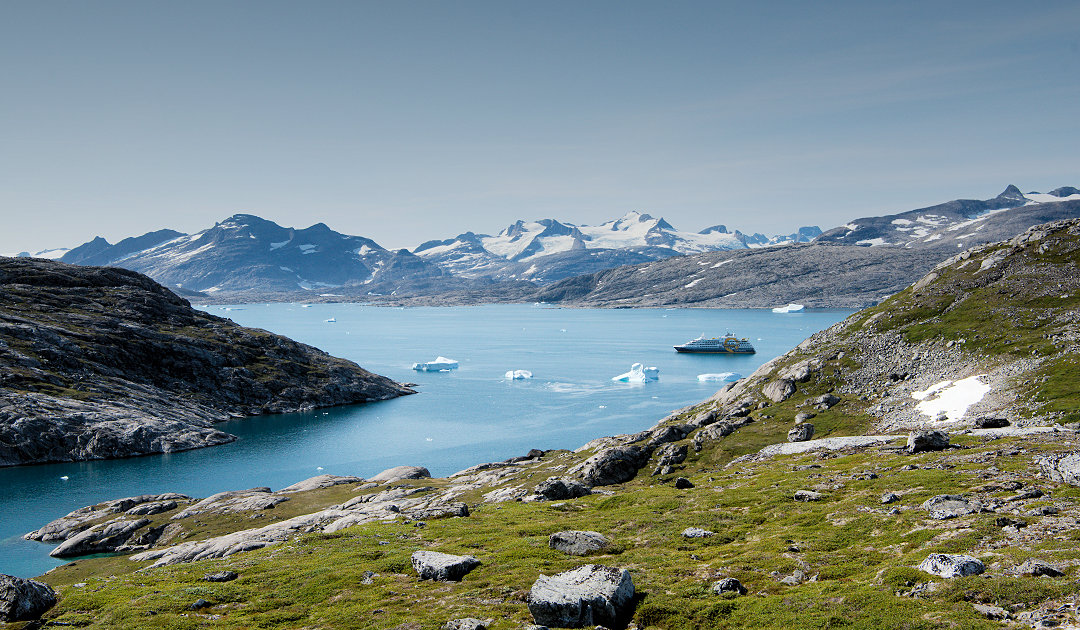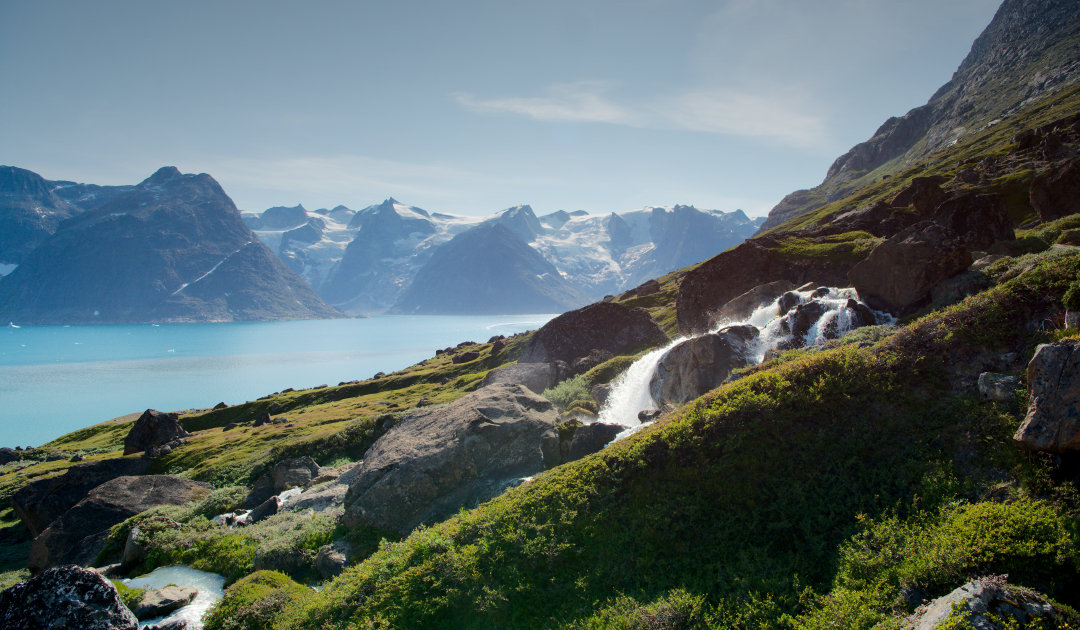Being on the road in Greenland is an adventure in itself. There are hardly any roads, and if you want to get from A to B, you have to use ships, boats, planes or helicopters. We have all three transportation options and therefore have three adventure options.

For our captain, this trip is also an adventure. Because the goal of the expedition is to go where hardly anyone has gone before and explore the unknown. But if hardly anyone has been there, how are you supposed to know what it’s like and what to expect? Whether our captain is an adventurous person I don’t know (for COVID security reasons the otherwise open bridge is closed), but he must be, otherwise we wouldn’t be standing in front of a large fjord entrance slowly searching for a path in. Around us, icebergs glisten in the morning sun, illuminating an otherworldly landscape of mountain peaks and glaciers identified as foothills of the ice sheet. Actually, the way seems clear, the icebergs are far apart? But the danger does not come from there, but from unmapped seabed. And when you don’t know what lies ahead, you slowly feel your way forward. In our case, the ship’s radar is supported with measurements from a Zodiac ahead. Exploring the unknown part 1 today.
Today’s goal, as expedition leader Allison Gordon had already prepared us for, was to explore never-before-visited landing sites on the coast and inland. But if no one has been there yet, how can you know what awaits the nearly 130 guests and guides there? And how do you get them inland? Fortunately, Airbus has developed the answer in the form of two helicopters. The two H145 aircraft are at the heart of this journey, as they are meant to be the eye in the sky and help make the unknown visible, both directly through reconnaissance flights and indirectly by taking us to the places where we then continue the exploration. And lo and behold, the concept works. While we are having breakfast, the first flights leave, first bringing back information and then the first group of hikers to the unknown area. The rest of us go by Zodiac to a bay, which we can now explore in more detail. Walking up the hills, surrounded by myriads of flies and non-biting mosquitoes, we feel a bit like the old polar explorers, looking at every rock, every plant, and once at the top, taking in the landscape, mapping it in our heads and cell phones. Exploring the unknown part 2 today.



It turns out that the fjord goes on for a few more kilometers and literally cries out to be visited by us even further. Numerous small and large icebergs float in the water, on the steep mountain slopes lie the glaciers, most of which no longer reach the water. The end of the fjord is the beginning of the ice sheet. But we go ashore at another place, where again no one has been, and only the fact that it looks exciting, with wild glacial streams, steep mountain sides and a lush green carpet of bushes and grasses, is reason enough to go ashore here and at the same time send out kayakers to explore the furthest part of the fjord. After more than two hours, the slopes, moraines, waterfalls and streams have been photographed, the plants explained and the complex geology contemplated, and many of us would want to stay longer, because the site has not yet exhausted its potential. There would be even more unknowns to explore. But there are other places, too, and luckily we have our three transport options.
Dr Michael Wenger, PolarJournal
More on the subject:





